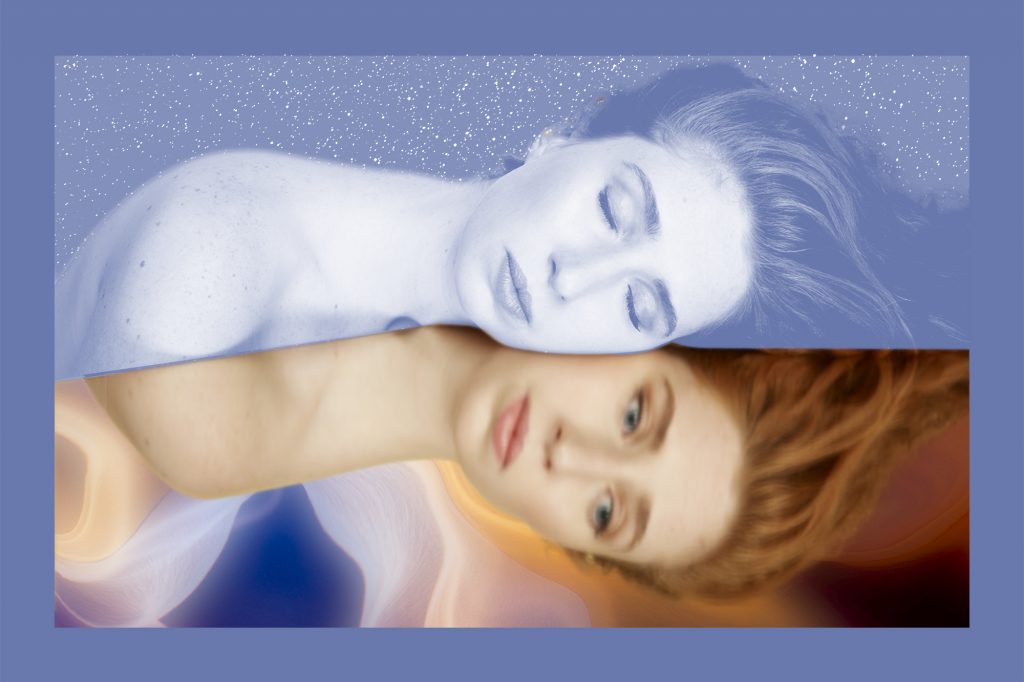
Dreams are always an interesting topic to study and think about. We have all at least once wondered why we dreamed of a particular event and what it actually means. Sometimes the scenarios we dream are very real and we can relate them to reality, while sometimes we dream so many crazy things that we wonder where those in our head come from. One of the interesting things about dreams is the so-called lucid dreams.
Maybe it happened to you sometimes that you were dreaming and you were aware of it while it was happening. You could make decisions consciously and change the course of the dream. If this has ever happened to you, it means you had a lucid dream. In today’s article, we write about what is lucid dreaming and is it dangerous.
What is lucid dreaming?

Lucid dreaming is when you dream and are aware of it. Lucid dreams look very realistic and you feel like you are in real life. And not only that you feel, but you can even manage your sleep activities and consciously change the course of the dream. For example, you may dream of running away from someone and feel scared. But suddenly you can realize that it is just a dream and that you can do something about it, and that fear that you felt disappears.
Maybe this has happened to you a lot of times, and you may hear about this type of dream for the first time in your life. Both are understandable, as research has shown that not everyone experiences lucid dreams. Approximately half of the population experience this type of dream, and even to them it occurs very rarely, only a few times a year. Sometimes even once every few years.
If you thought that things like this only happen to you and you felt scared about it, we are here to tell you that everything is fine and that dreams like this are completely normal. And maybe this information disappointed you because you thought your lucid dreaming was a rare gift. But the truth is that this phenomenon is pretty common. Sorry!
When do lucid dreams most often occur?

You have probably heard of something called the REM sleep phase. REM stands for Rapid Eye Movement. This is a phase characterized by faster eyeball movements, fast breathing, and brain activity that is significantly increased compared to the non-REM phase. Lucid dreams usually occur during the REM phase. When does this sleep phase begin? About an hour and a half after you fall asleep and it initially lasts a very short time – about 10 minutes. Then, after the next hour and a half, the second REM phase occurs and lasts a bit longer. And this process continues until it reaches a length of an hour.
Does lucid dreaming have any practical application?

It probably sounds appealing to you to be able to control and manage your dreams. And the fact is that people are trying to come up with lucid dreams in order to have fun and explore this magical world more deeply. And there is nothing wrong with that!
However, lucid dreaming is much more than a fun activity. It can be used for therapeutic purposes in people who face severe nightmares. This sometimes happens to people after experiencing some serious trauma. Sometimes nightmares are so common, real, and frightening that they can significantly affect the quality of life of the person experiencing them. In such cases, the ability to control the flow of dreams and do something about the terrible situation you are facing can be liberating. If you have severe nightmares, you can try to learn lucid dreaming techniques and help yourself overcome this condition. On luciddreamsociety.com you can read more about how to control your dreams and intentionally provoke lucid dreaming.
Lucid dreaming is sometimes used to overcome phobias, as part of exposure therapy. Through lucid dreams, a person can gradually expose themselves to what causes his phobia, until they are ready to completely overcome it. The good thing about this approach is that you are aware that it is a dream, so even though you are uncomfortable exposing yourself to what causes your phobia, you know that it is not real and that it cannot really harm you.
Is lucid dreaming dangerous?

The logical question that may come to your mind is: is lucid dreaming dangerous? You may even have heard a number of bad things that can happen to you if you try this type of dreaming, but keep in mind that it is misinformation. Lucid dreaming is completely safe in most cases.
However, that does not mean that you should jump into this world of dreams just like that. We suggest that you consult with experts and gradually expose yourself to lucid dreams until you feel completely comfortable and safe.
Some of the side effects of lucid dreams are sleep deprivation and hallucinations. If you think about it a little, you will realize that sleep deprivation is a logical consequence for all people who are just at the beginning of this adventure, as they can get too excited while lucid dreaming and forget that they need a good night’s sleep. Second, people with some mental problems can experience hallucinations, because it can be challenging for them to distinguish dream from reality, so these techniques are not recommended for them.
So yes, lucid dreaming is safe, but we always recommend doing it slowly and with professional help.
Conclusion
If you have ever been aware that you were dreaming during sleep and were able to consciously manage activities in your sleep, it means that you have experienced lucid dreaming. This type of dreaming happens in half of the people, and it happens pretty rarely, but with the help of certain techniques, you can experience lucid dreams much more often. Lucid dreaming is used as a type of therapy for nightmares and phobias, and you can also do it for pure fun. Although lucid dreaming is safe, we always advise you to consult an expert first and slowly develop the ability to induce lucid dreams until you feel completely comfortable and safe.









